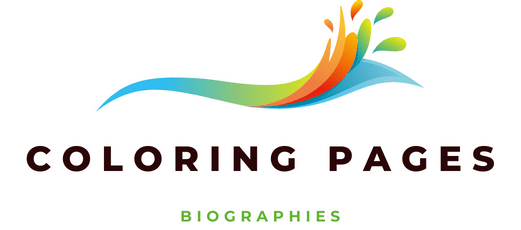Ganache, a luxurious blend of chocolate and cream, is traditionally a no-go for those following a vegan diet due to its dairy content. But what if we told you it’s possible to create a vegan version of this indulgent treat that’s just as rich and creamy as the original? With the right techniques and ingredients, this dream can become a reality. In this article, we will explore techniques for creating a vegan chocolate ganache using plant-based replacements for dairy cream, making it a guilt-free delight for those who are dairy-free or simply conscious about animal welfare.
Replacing Dairy Cream with Coconut Milk
The cornerstone of any ganache recipe is the cream. For a vegan ganache, it’s essential to find a non-dairy alternative that can emulate the fat content and consistency of heavy cream. Coconut milk, especially the canned variety, is a fantastic substitute. With its inherent creamy texture and high fat content, it can perfectly mimic the mouthfeel of dairy cream in a ganache.
In parallel : Is It Possible to Make a Gourmet King Crab Legs with Garlic Butter at Home?
To make a vegan ganache with coconut milk, you will need dark chocolate and full-fat canned coconut milk. Chop the chocolate into small pieces and place it in a heatproof bowl. Heat the coconut milk in a saucepan over medium heat until it starts to simmer, then pour it over the chopped chocolate. Allow this to sit for a few minutes, then stir until you have a smooth, glossy ganache.
Remember, the quality of the chocolate and coconut milk you use will directly impact the final result. Opt for a high-quality dark chocolate with a cacao content of at least 70% and a premium brand of full-fat canned coconut milk for the best results.
Also read : Can You Master the Art of Making a Flaky Puff Pastry from Scratch?
Incorporating Water for a Lower Fat Option
If you’re looking for a lower-fat option without compromising the taste and texture of your vegan ganache, water can be your secret weapon. The technique of emulsifying chocolate and water was popularized by renowned French chef Hervé This. It may sound counterintuitive as chocolate and water are often seen as sworn enemies, but with the right methodology, you can create an incredibly silky ganache.
Start by chopping dark chocolate and placing it in a bowl. Boil water in a kettle or saucepan, then pour it over the chocolate. Allow to sit for a few minutes before stirring to combine. The key here is to add the water gradually and whisk vigorously to emulsify the mixture. This technique, while somewhat unconventional, reduces the fat content of the ganache without sacrificing its decadent texture.
The Role of Heat in Vegan Chocolate Ganache
Heat is an integral part of any ganache-making process. It’s necessary to melt the chocolate and ensure a smooth, lump-free mixture. However, applying too much heat can cause the chocolate to seize, leading to a grainy ganache. The principle is the same whether you’re making a traditional ganache or a vegan one.
It’s advised to use a double boiler to melt the chocolate, rather than directly heating it on the stove. This method allows for gentle and consistent heat, reducing the risk of the chocolate burning or seizing. If a double boiler isn’t available, you can fashion one by placing a heatproof bowl over a saucepan of simmering water.
When using coconut milk or any other cream substitute, heat it separately in a saucepan until it just begins to simmer, then pour it over the chopped chocolate. Give it a few minutes to melt the chocolate before stirring.
The Importance of Time: Resting and Setting Your Ganache
Patience is a virtue, especially when it comes to making ganache. After combining the chocolate and your chosen non-dairy liquid, it’s crucial to give the mixture time to rest. This allows the heat from the liquid to evenly melt the chocolate, ensuring a smooth and homogenous ganache.
Once you’ve achieved a glossy, lump-free ganache, it’s not quite ready to be used. Ganache needs time to cool and thicken before it can be used as a frosting or filling. It’s best to let your ganache sit at room temperature for several hours, or even overnight if you have the time. If you’re in a hurry, you can speed up the process by placing the ganache in the fridge, but be sure to stir it every 10 minutes or so to prevent it from setting unevenly.
Creating a vegan chocolate ganache may require a bit of experimentation to find the right balance of ingredients and technique that works for you. But with these techniques at hand, you’re well on your way to mastering the art of dairy-free ganache making.
Selecting the Right Chocolate for Your Vegan Ganache
Choosing the correct chocolate is a critical step in crafting a rich and flavorful vegan ganache. The majority of dark chocolates are naturally vegan, but it’s always essential to check the ingredients list for hidden dairy products such as milk fats or milk solids. Equally, some chocolates might contain other non-vegan ingredients like shellac or whey powder.
When selecting your chocolate, it’s recommended you opt for high-quality dark chocolate with a cacao content of 70% or above. This provides a depth of flavor that complements the creaminess of the coconut milk or other plant-based cream substitutes you’ll be using.
The texture of the chocolate also matters. Ideally, you want chocolate that melts smoothly for your vegan ganache. Chocolate chips are often coated with substances to prevent them from melting, which may affect the consistency of your ganache. If possible, use a bar of chocolate and chop it into small pieces. This will ensure it melts evenly when mixed with the heated coconut milk or water.
Don’t forget: the quality of your chocolate will directly affect the taste of your vegan ganache. An excellent chocolate can turn a good ganache into a fantastic one.
Exploring Other Vegan Cream Substitutes
While coconut milk is a popular cream substitute in vegan ganache recipes, there are other dairy-free alternatives worth exploring.
Coconut cream, for instance, is a fantastic option that offers a thicker, richer texture than coconut milk. Just like with coconut milk, ensure you’re using full-fat coconut cream for the best results.
Another popular substitute is almond milk. Almond milk has a subtle nutty flavor, and while it’s thinner than coconut milk, it can still work in a vegan ganache recipe. If using almond milk, take into account that you may need to use more chocolate to achieve the desired thickness.
Soy milk and cashew milk are also worth considering. They both have neutral flavors and creamy textures that work well in a vegan ganache.
Remember, every non-dairy milk has a unique flavor profile that will subtly affect the taste of your vegan ganache. Feel free to experiment with different plant-based milks to find the one that best suits your personal taste.
Wrap-up: Mastering Your Vegan Chocolate Ganache
Creating a vegan chocolate ganache doesn’t have to be a daunting task. By understanding the importance of using high-quality dark chocolate, finding a suitable plant-based cream substitute like coconut milk or coconut cream, and applying gentle heat using a double boiler, you can make a rich, creamy, and dairy-free ganache.
Patience is a vital part of the process. Allowing your ganache to rest and set properly will ensure the best texture and flavor. Whether you’re using your vegan ganache as a filling for a chocolate cake, a topping for ice cream, or a decadent spread on a gluten-free toast, taking the time to perfect your technique and recipe will make all the difference.
And remember, making the perfect vegan ganache is also about experimenting and personalizing. Don’t be afraid to try different kinds of plant-based milk, adjust the chocolate-to-liquid ratio, or incorporate other flavorings. After all, the best part of making a vegan ganache is that it’s a guilt-free delight you can enjoy at any time. Enjoy the process and most importantly, enjoy your vegan chocolate ganache.











